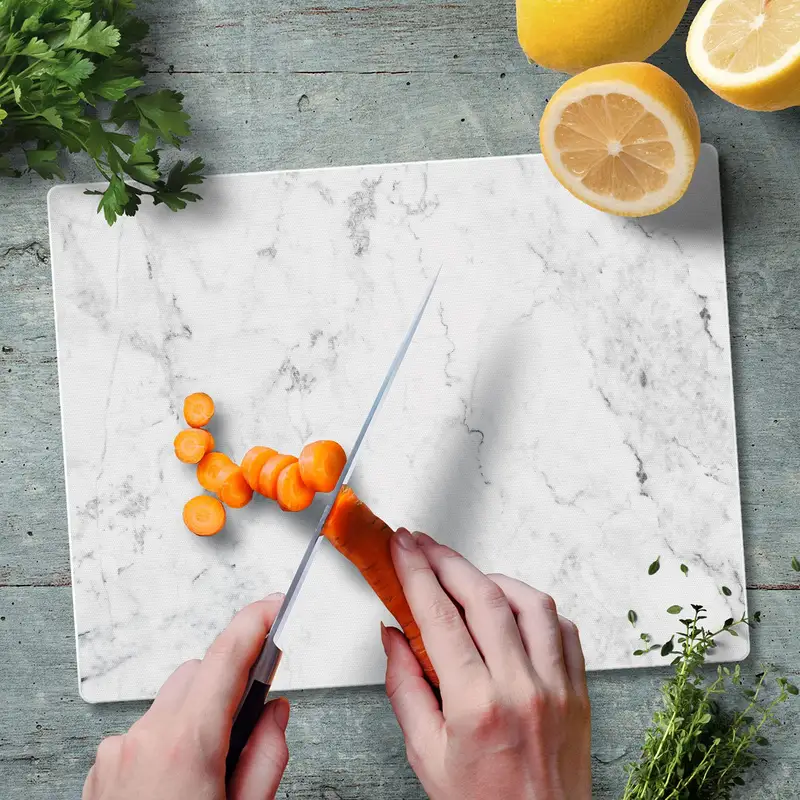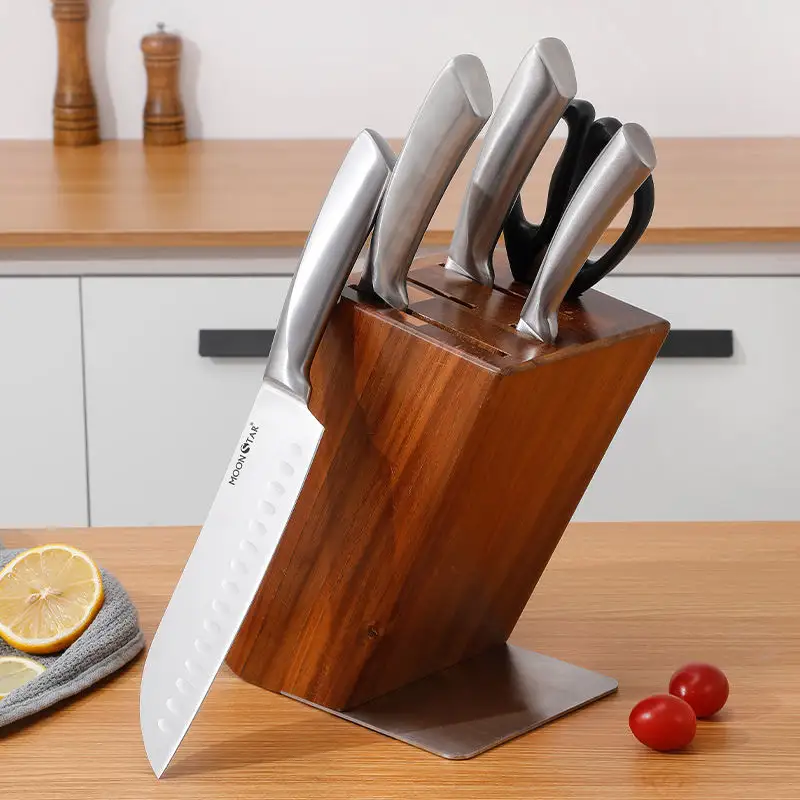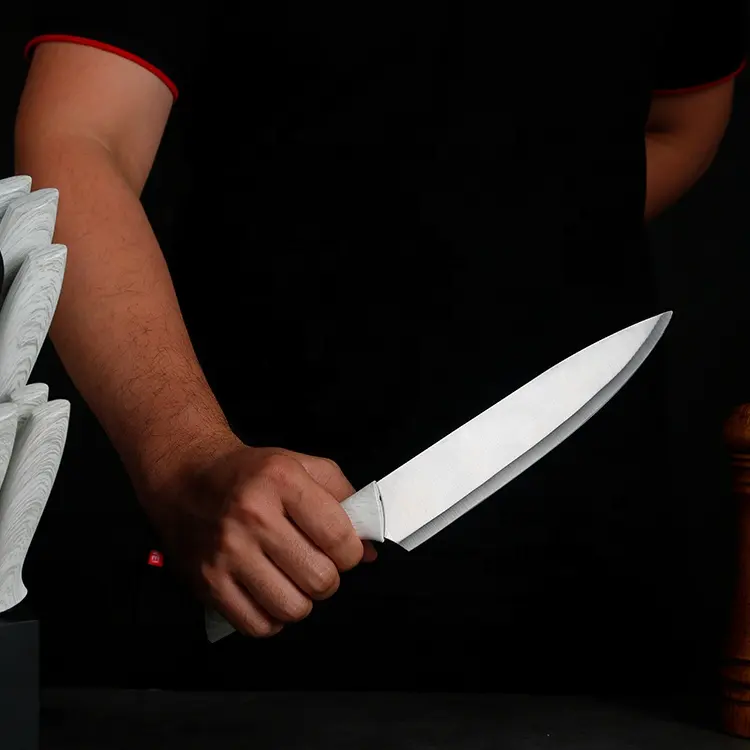Mastering knife skills is a fundamental aspect of becoming a proficient cook. Proper techniques not only enhance efficiency in the kitchen but also contribute to safety. Here’s a guide to some essential knife skills along with tips on how to master them:
1. Grip:
- Technique: Hold the knife with a firm grip, but not so tight that it becomes uncomfortable.
- Tip: Use a pinch grip, with your thumb and index finger gripping the blade near the bolster, and the remaining three fingers around the handle.
2. Rocking Motion:
- Technique: For tasks like chopping and mincing, use a rocking motion by pivoting the knife on the back of the blade.
- Tip: Keep the tip of the knife in contact with the cutting board for stability.
3. Chopping:
- Technique: Lift the blade and bring it down with a slight forward motion, letting the knife do the work.
- Tip: Use the knuckles of your guiding hand as a guide to maintain a consistent cut size.
4. Slicing:
- Technique: Use a smooth, controlled motion to slice through foods.
- Tip: Practice creating thin, even slices for consistent cooking results.
5. Dicing:
- Technique: Start with a uniform-sized piece, then make evenly spaced cuts in one direction before making perpendicular cuts to create cubes.
- Tip: Pay attention to the size of your initial cuts for uniform dicing.
6. Julienne:
- Technique: Cut food into long, thin strips.
- Tip: Use a claw grip with your fingers tucked to protect them while making the cuts.
7. Mincing:
- Technique: Make fine, close cuts to create small pieces of herbs or garlic.
- Tip: Use a rocking motion, and ensure the knife blade stays in contact with the cutting board.
8. Peeling:
- Technique: Use a paring knife to remove the skin from fruits and vegetables.
- Tip: Hold the item with your non-dominant hand, and make controlled, small movements with the knife.
9. Filleting:
- Technique: Remove the bones from fish by making precise cuts along the spine.
- Tip: Use a flexible boning or fillet knife for better maneuverability.
10. Boning:
- Technique: Remove bones from poultry or meat using a boning knife.
- Tip: Work closely to the bone to minimize waste.
11. Scoring:
- Technique: Make shallow cuts on the surface of foods, such as meat or bread.
- Tip: Helps with even cooking or creating decorative patterns.
12. Curling Technique:
- Technique: Curl your fingertips inward and use your knuckles as a guide when chopping.
- Tip: Minimizes the risk of cutting your fingertips.
13. Honing:
- Technique: Use a honing rod to maintain the edge of your knife between sharpenings.
- Tip: Develop a regular honing routine to keep your knives sharp.
14. Sharpening:
- Technique: Use a whetstone, knife sharpener, or professional service to sharpen your knives.
- Tip: Follow the manufacturer’s guidelines for the correct angle and technique.
15. Cleaning:
- Technique: Handwash knives with mild soap and warm water, and dry them immediately.
- Tip: Avoid putting knives in the dishwasher, as it can damage the blades and handles.
16. Safe Storage:
- Technique: Store knives in a knife block, magnetic strip, or blade guards to protect the blades and prevent accidents.
- Tip: Keep knives away from cluttered drawers to avoid damage.
17. Practice:
- Tip: Regular practice is key to mastering knife skills. Start with basic techniques and gradually advance to more complex cuts.
Remember, safety is paramount when handling knives. Take your time, concentrate on your technique, and always use the appropriate knife for the task at hand. As you practice and gain confidence, you’ll find that efficient knife skills contribute significantly to the joy and success of your culinary endeavors.



